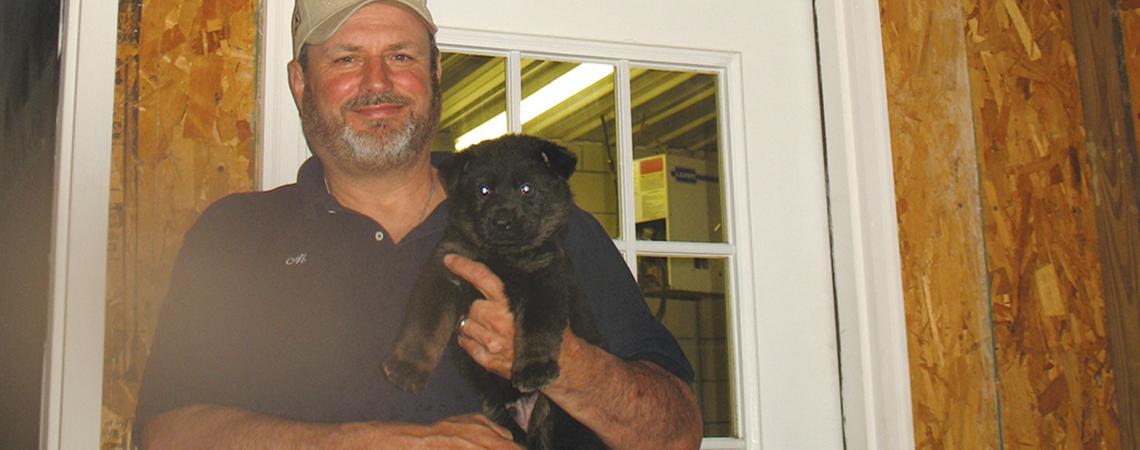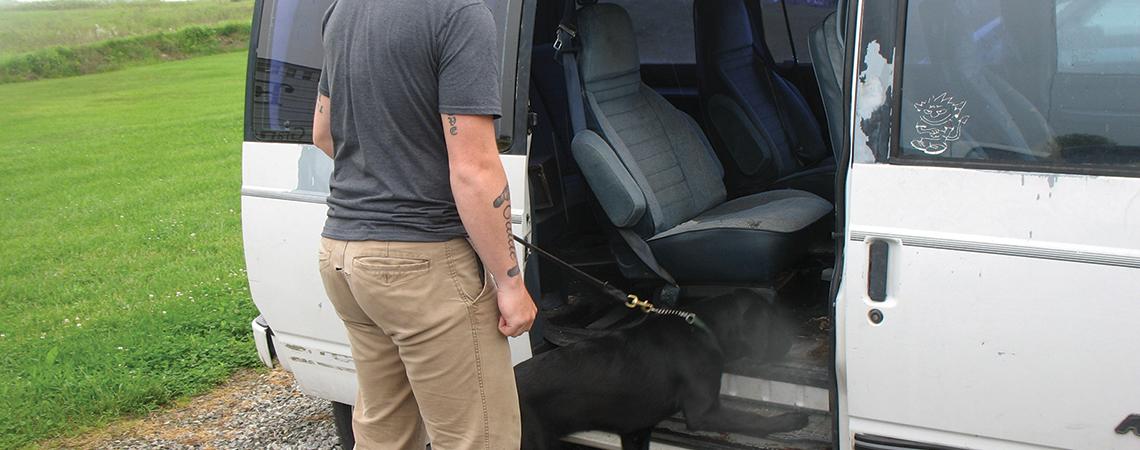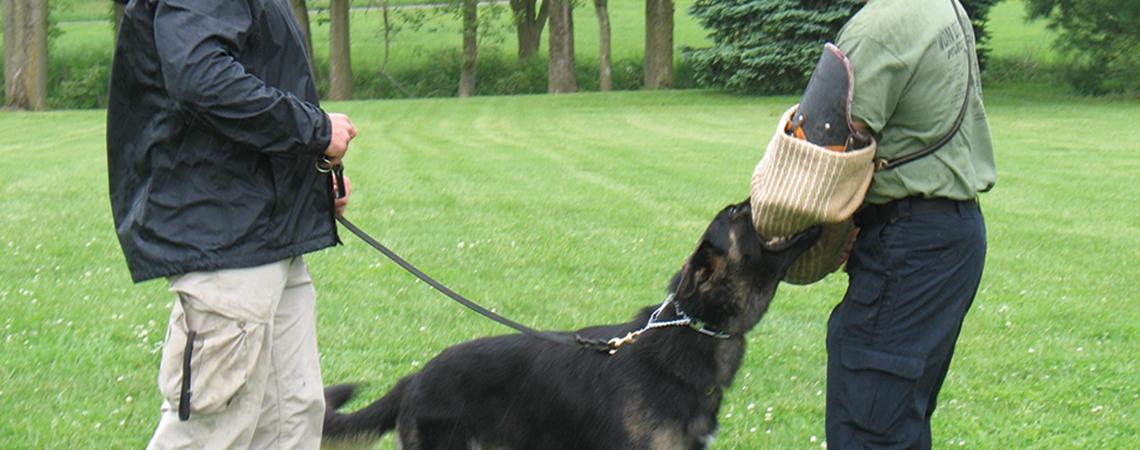Al Gill believes well-trained German shepherds can mean the difference between life and death in many law enforcement situations.
As the owner of Von der Haus Gill German Shepherds and Police K-9 Academy near Wapakoneta in rural Auglaize County, he is committed to making sure the dogs and their two-legged handlers are prepared for whatever might happen on the job.
Gill, who formerly served as a K-9 officer with the Wapakoneta Police Department and later the Auglaize County Sheriff’s Office, started his business in 1992. He moved to the current 20-acre site, where the business is a member of Mid-Ohio Energy Cooperative, five years later.
Al Gill holds a puppy that could someday become a K-9 unit.
The property is now home to a world-class training facility as well as housing units for male and female officers who come from across the country to participate in academy classes. There is also a kennel that can accommodate 60 adult dogs as part of the business’ breeding operation.
Gill travels to Europe five or six times a year, working with a longtime associate to acquire high-quality dogs — primarily from Germany and occasionally from the Czech Republic. He evaluates each animal on such factors as overall health, temperament, confidence, social skills, and the desire to work and please. More than 3,000 dogs have been brought to Von der Haus Gill (House of Gill) over the course of nearly 30 years.
“We want the best dogs possible, whether they’re destined to become K-9 units or family companions,” he says. “This is no hobby. We are a working, breeding, training facility 24/7.”
Academy training commences after a dog marks its first birthday. Handlers and their department dogs spend six weeks bonding and learning to work as a team. Twelve- to 14-hour days are the rule rather than the exception. Obedience comes first and then tracking, before moving on to more complex tasks. All commands are given in German and for good reason: Not only are the dogs accustomed to the words, but bystanders are not likely to understand the meaning.
Early on, police dogs were bred for a single purpose, such as tracking, officer protection, or patrol duty, according to Gill, who is one of three master trainers on staff. Nowadays, departments want dogs capable of serving multiple purposes: narcotics detection, explosives detection, patrol, personal protection, and search and rescue.
A dog trained to detect narcotics represents an investment of around $12,000, while one adept at locating explosives is closer to $15,000. Agencies face a grand total ranging from $50,000 to $70,000 when other factors like special cruisers, safety equipment, and insurance are included.
Training never ends for the dogs or their handlers, with maintenance work taking place every two weeks to keep skills fine-tuned. A K-9 unit earns retirement status around the age of 10, with the likelihood of spending its golden years at the home of the officer it diligently protected.












